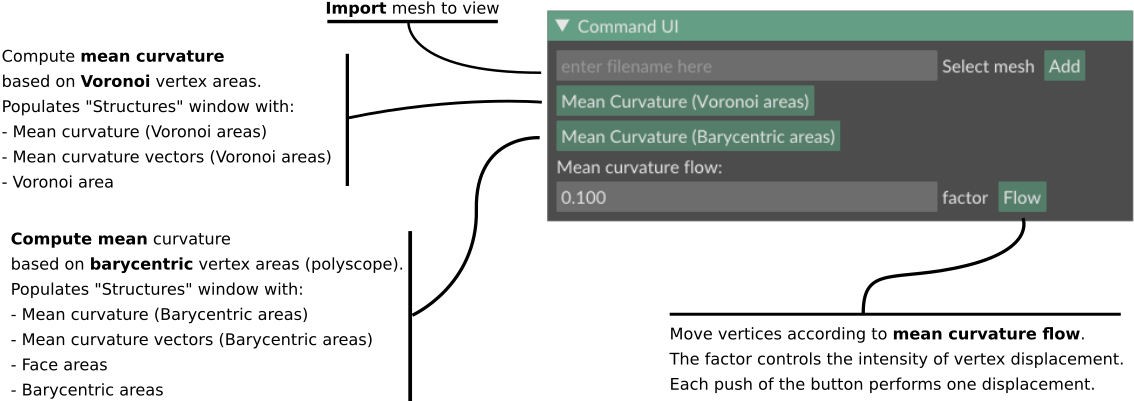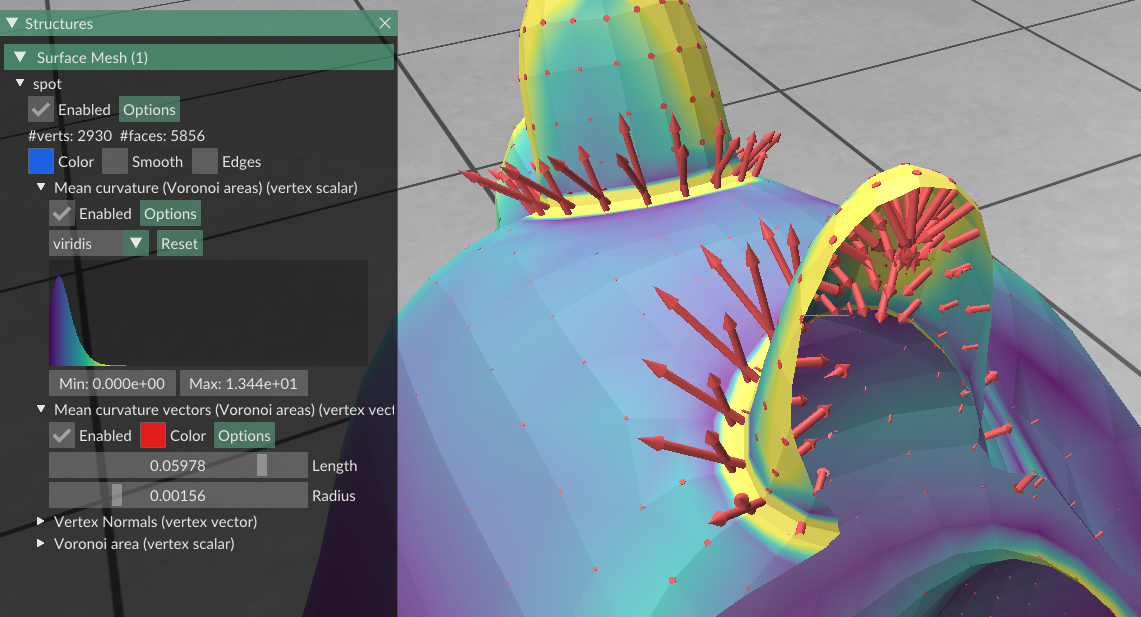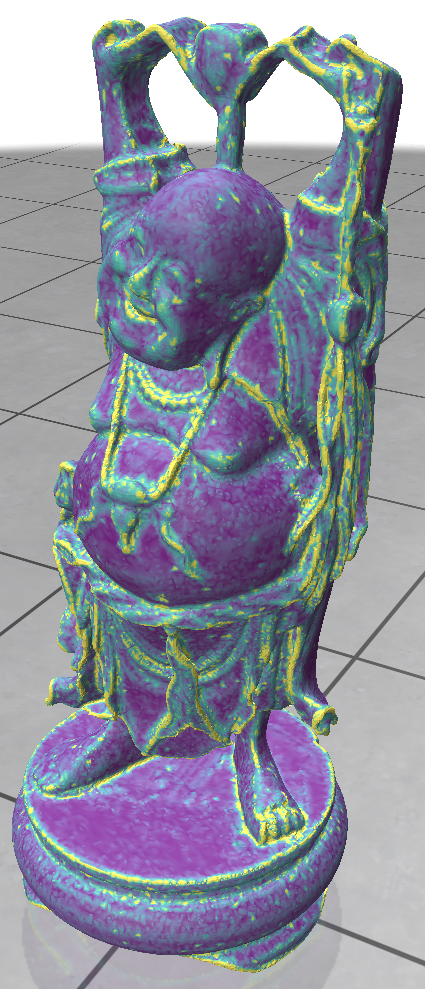A mean curvature viewer based on Polyscope.
A simple C++ viewer for mean curvature vizualization of triangular meshes, built upon the 3D data manipulation and vizualization library Polyscope.
Supports .obj, .ply, and .off files.
The implementation is based on "Discrete Differential-Geometry Operators for Triangulated 2-Manifolds, Meyer et al". Specifically, the mean curvature K(xi) vector at each vertex of the mesh xi is computed according to:
For the computation of the vertex area Amixed two approaches are considered:
- Voronoi vertex areas are computed according to the the algorithm described in Fig.4 of the afforementioned paper.
- Barycentric areas are provided natively by Polyscope.
To download, run:
git clone --recurse-submodules https://github.com/alexdkeros/Curvscope.git
To compile the code, navigate to the project's directory and run:
mkdir build
cd build
cmake ..
make
The executable will be located in <project directory>/build/bin/curvscope.
In order to launch the viewer, from the project's directory, run:
./build/bin/curvscope [path/to/mesh1.obj path/to/mesh2.ply path/to/mesh3.off ...]
(Command line arguments are optional)
How to use the Command UI:
Curvscope only depends on Polyscope, which packages all its source code dependencies with the repository.
Polyscope is included as a git submodule.
In the following examples mean curvature is computed with Mean Curvature (Voronoi areas):
| Mean Curvature (Voronoi areas) | Mean Curvature (Barycentric areas) |
|---|---|
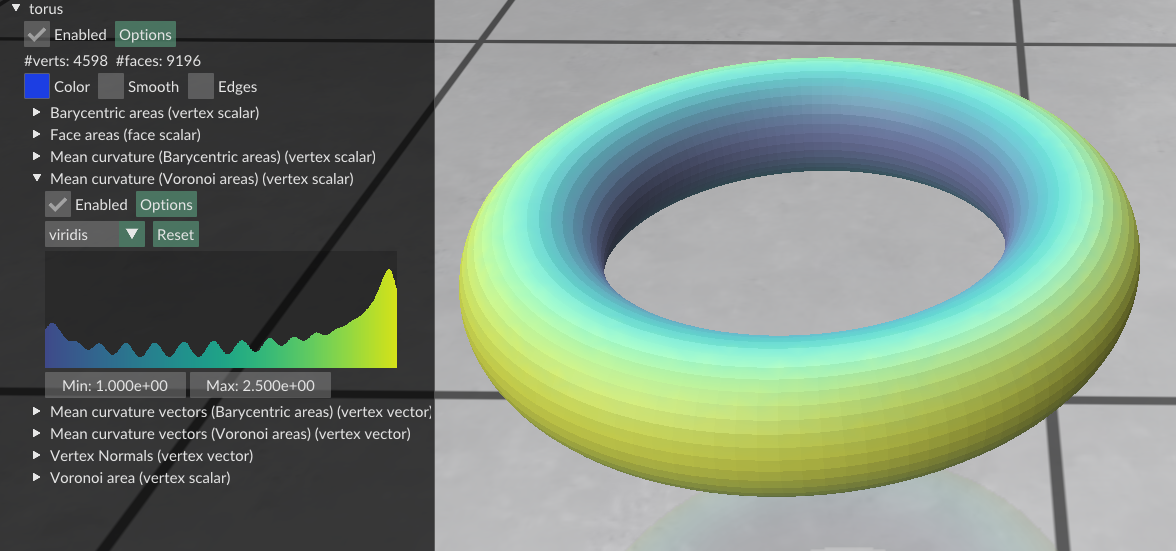 |
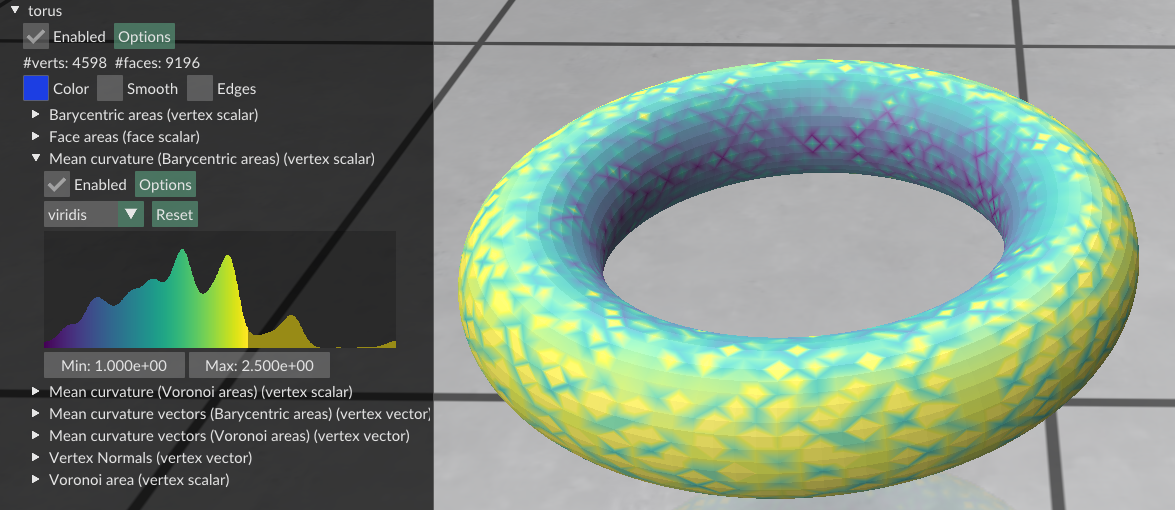 |
Barycentric areas can cause irregularities in curvature computation due to triangulation peculiarities, as seen below:
| Voronoi vertex areas | Barycentric vertex areas |
|---|---|
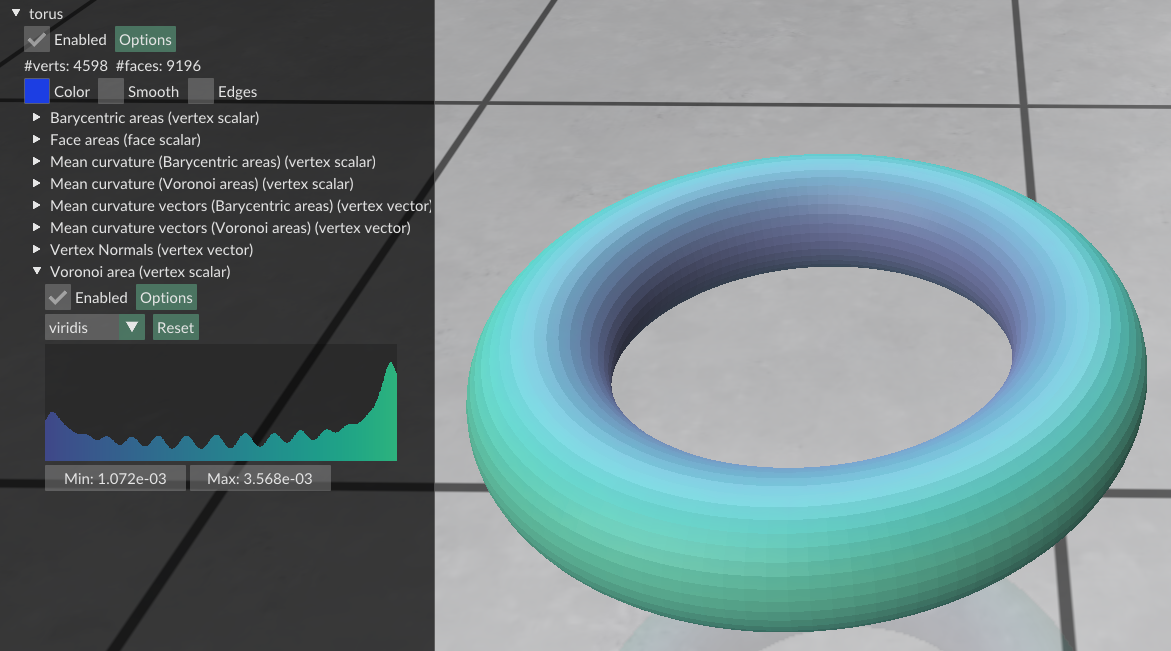 |
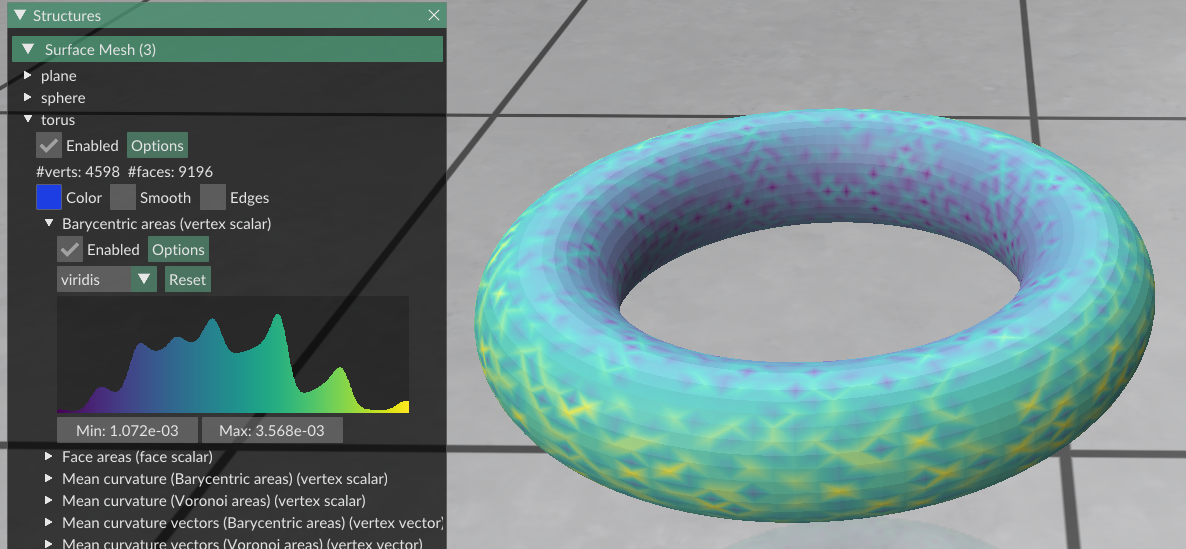 |
Similarly to the torus case, barycentric vertex areas on the sphere can cause outliers in curvature computation.
| Mean Curvature (Voronoi areas) | Mean Curvature (Barycentric areas) |
|---|---|
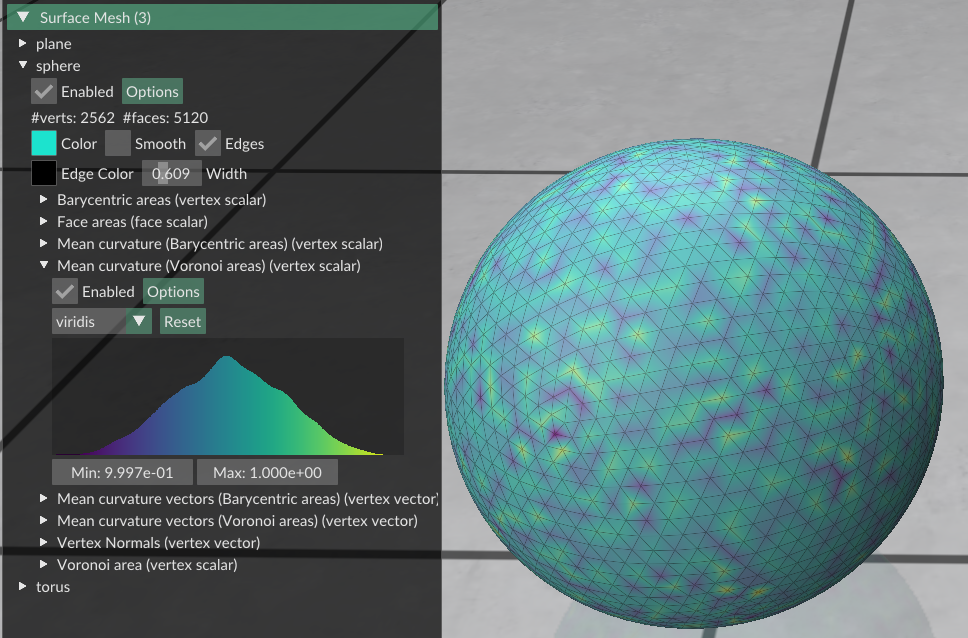 |
 |
A very crude implementation of mean curvature flow, according to the computed mean curvature vectors. Unfortunately, when face areas become too small singularities cause them to get deleted.
| Before | After |
|---|---|
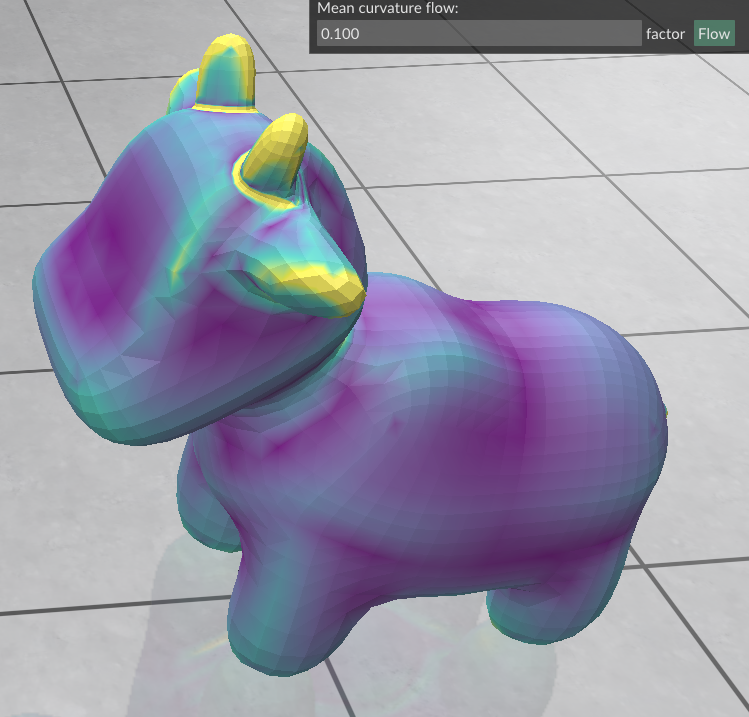 |
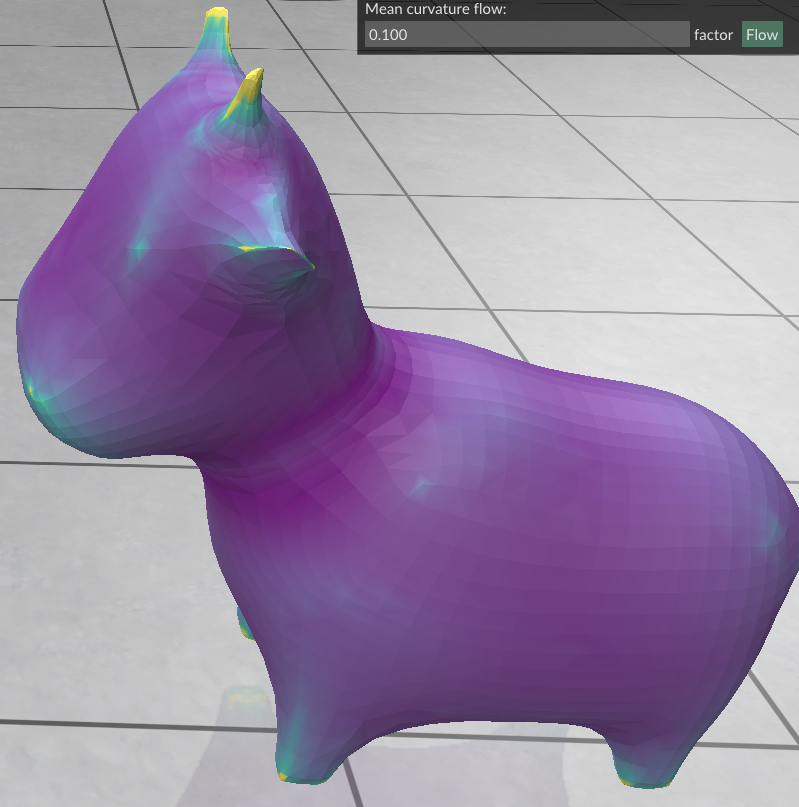 |
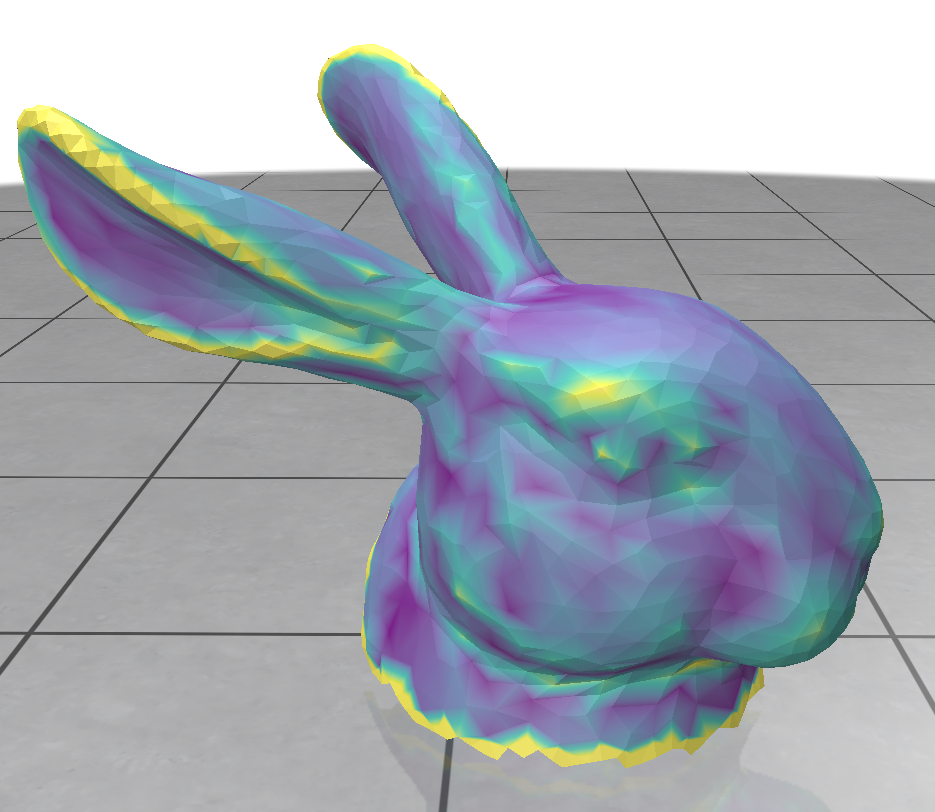 |
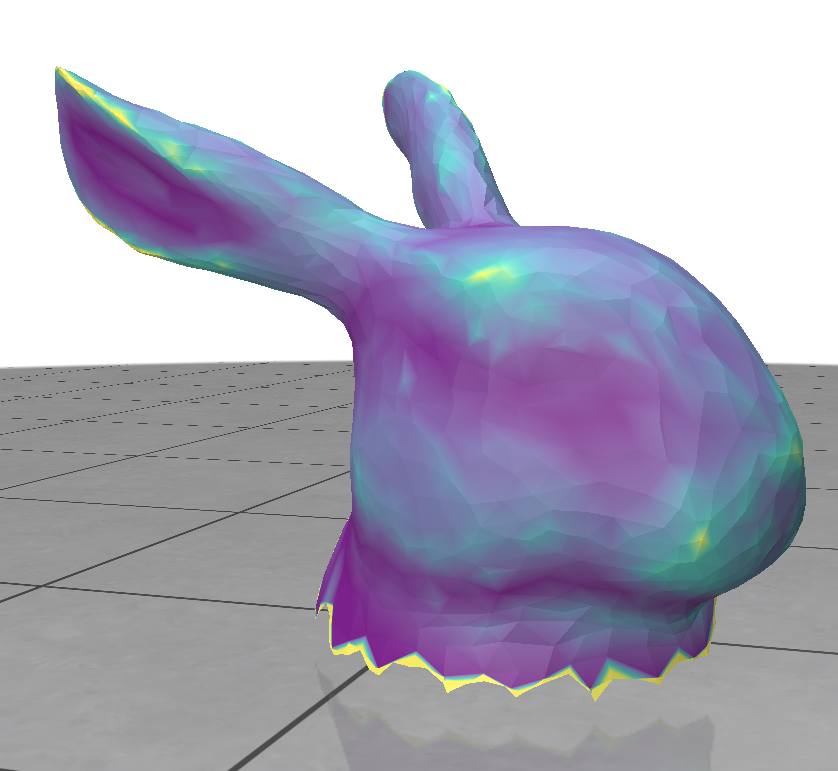 |
An alternative approach would be to use libIGL, a handy geometry processing library. To this end, one only needs to clone the Polyscope-libIGL project template and add the following functions in main.cpp, with their respective callbacks. Examples of these functions are provided in the libIGL tutorial.
The Laplace-Beltrami operator approach:
void addMeanCurvatureScalar() {
using namespace Eigen;
using namespace std;
MatrixXd HN;
VectorXd H;
SparseMatrix<double> L,M,Minv;
igl::cotmatrix(meshV,meshF,L);
igl::massmatrix(meshV,meshF,igl::MASSMATRIX_TYPE_VORONOI,M);
igl::invert_diag(M,Minv);
HN = -Minv*(L*meshV);
H = HN.rowwise().norm(); //up to sign
polyscope::getSurfaceMesh("input mesh")
->addVertexScalarQuantity("mean curvature", H,
polyscope::DataType::SYMMETRIC);
polyscope::getSurfaceMesh("input mesh")
->addVertexVectorQuantity("mean curvature vectors", HN);
}
The Quadratic fit approach:
void addMeanCurvatureQuadFitScalar() {
using namespace Eigen;
using namespace std;
VectorXd H;
MatrixXd PD1,PD2;
VectorXd PV1,PV2;
igl::principal_curvature(meshV,meshF,PD1,PD2,PV1,PV2);
// mean curvature
H = 0.5*(PV1+PV2);
polyscope::getSurfaceMesh("input mesh")
->addVertexScalarQuantity("mean curvature (QuadFit)", H,
polyscope::DataType::SYMMETRIC);
polyscope::getSurfaceMesh("input mesh")
->addVertexVectorQuantity("Principal vec1", PD1);
polyscope::getSurfaceMesh("input mesh")
->addVertexVectorQuantity("Principal vec2", PD2);
}
Timing comparisons on example meshes (average of 10 executions):
| Mesh | Ours (Voronoi vertex areas) | Laplace-Beltrami operator | Quadratic fit |
|---|---|---|---|
| spot | 3ms | 118ms | 2764ms |
| bunnyhead | 1ms | 67ms | 1528ms |
Example mean curvature vizualization on bunnyhead (colorscale range [0-20]):
| Ours (Voronoi vertex areas) | Laplace-Beltrami operator | Quadratic fit |
|---|---|---|
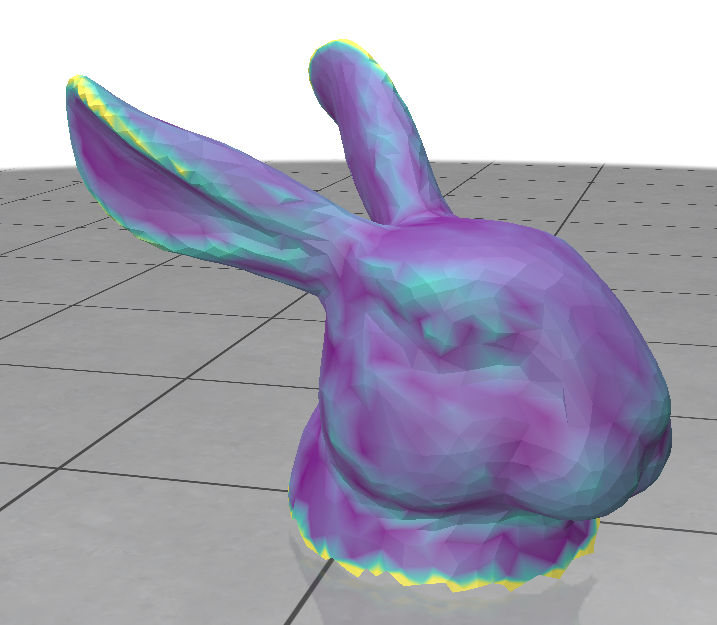 |
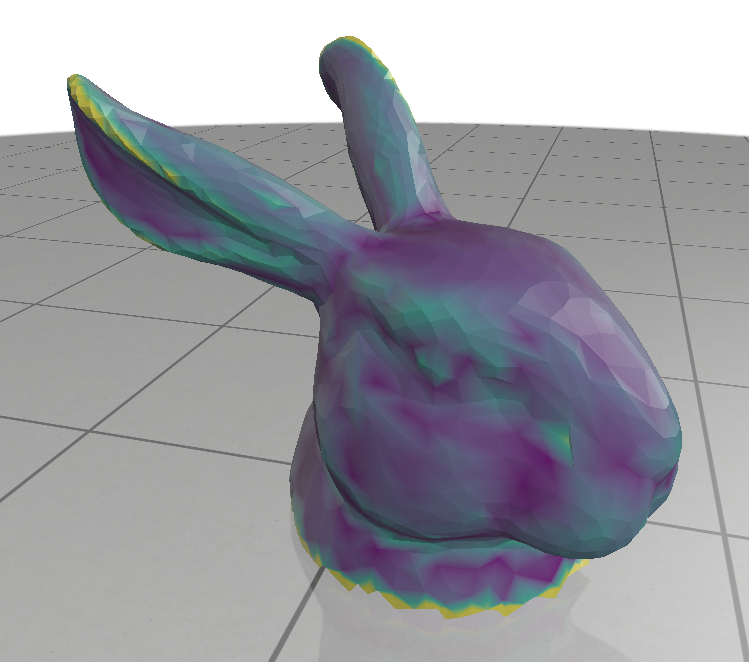 |
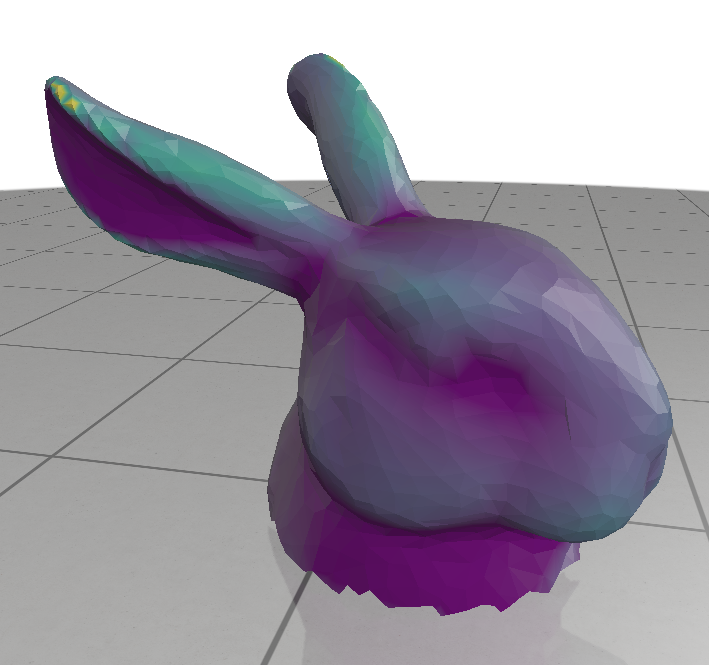 |

